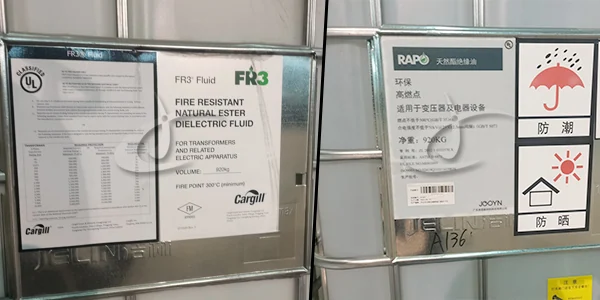Utilized Transformer Oil Recycling: Eco-Friendly Disposal and Reuse Options
Utilized Transformer Oil Recycling: Eco-Friendly Disposal and Reuse Options
Blog Article
Recognizing Dielectric Transformer Oil: Vital Advantages and Uses
Dielectric transformer oil offers as a crucial element in the procedure of electrical transformers and high-voltage tools, functioning mainly as an insulating medium. As we check out the numerous benefits and uses of dielectric transformer oil, one have to think about just how its role influences not just tools reliability, but additionally more comprehensive functional factors to consider.
What Is Dielectric Transformer Oil?
Dielectric transformer oil is a customized protecting fluid used in electric transformers and various other high-voltage electric devices. Unlike conventional oils, dielectric oil is particularly created to possess high dielectric strength, which allows it to hold up against substantial electric tension without conducting power.
Typically originated from mineral oil or artificial sources, dielectric transformer oil meets rigid sector criteria for pureness and efficiency. Its chemical composition is meticulously developed to lessen the threat of oxidation and deterioration with time, which is crucial for keeping the oil's protecting homes.
In addition to its protecting characteristics, dielectric transformer oil functions as a coolant, moving and taking in warm created by electrical components during operation. This dual capability is crucial for boosting the total performance and lifespan of transformers. Dielectric oils are subject to rigorous testing to ensure compatibility with numerous materials and to stop unfavorable reactions that could endanger system honesty. On the whole, dielectric transformer oil is a necessary element in the reputable and risk-free procedure of electric infrastructure.

Key Benefits of Dielectric Oil
While dielectric transformer oil offers important features in electrical systems, its benefits prolong past mere insulation and cooling. One of the key advantages of dielectric oil is its high dielectric toughness, which successfully stops electric malfunction, guaranteeing the safe procedure of transformers and various other high-voltage tools. This residential property is crucial in maintaining the dependability and durability of electric systems.
Additionally, dielectric oil has exceptional thermal conductivity, enabling efficient heat dissipation. This attribute lessens the risk of getting too hot, hence expanding the lifespan of transformers and decreasing maintenance expenses. The oil's chemical security and resistance to oxidation contribute to its toughness, making sure regular efficiency over time.
Another significant advantage is its ability to suppress arcing and corona discharge, which can damage electric elements. By giving a stable medium for electric power transfer, dielectric oil improves functional security.

Applications of Dielectric Transformer Oil
Dielectric transformer oil plays a crucial duty in different applications within the electrical sector, primarily as a result of its special protecting and cooling down residential or commercial properties. One of its key uses is in power transformers, where it offers to protect interior components and promote heat dissipation. This is crucial in keeping operational efficiency and durability.
In addition to power transformers, dielectric oil is likewise used in circulation transformers, making certain risk-free and dependable energy circulation. Its high dielectric stamina avoids electrical discharges, thereby minimizing the danger of failings and improving system dependability. Dielectric transformer oil is utilized in reactors and capacitor financial institutions, where it does comparable features, securing delicate tools from electric breakdown.

Maintenance Factors To Consider
Appropriate maintenance of dielectric transformer oil is vital to make certain optimal efficiency and visit this site long life of electric tools. Routine tracking of the oil's chemical and physical properties is crucial to detect any kind of degradation that could hinder the insulation and cooling down abilities. Trick parameters to analyze consist of dampness material, level of acidity, and dielectric stamina.
Periodic tasting and laboratory analysis can identify the visibility of pollutants such as dissolved gases, particulates, and oxidation by-products. These analyses assist in establishing the oil's problem and whether it calls for therapy or replacement. Filtering systems can be employed to remove particulates and wetness from the oil, recovering its shielding homes and expanding its life expectancy.
Additionally, keeping appropriate operating temperature levels is crucial; too much warmth can navigate to this site accelerate oil weblink deterioration (transformer oil recovery). Carrying out temperature surveillance systems can aid in discovering getting too hot problems early
Ecological Impact and Safety
In analyzing the ecological impact and safety of dielectric transformer oil, it is crucial to consider both its composition and potential hazards. Usually obtained from mineral or artificial resources, dielectric oils can vary considerably in their environmental footprint.
Security worries mostly rotate around flammability and toxicity. Dielectric oils can be flammable, requiring appropriate storage space and managing procedures to mitigate fire threats. Moreover, certain ingredients made use of in transformer oils may present toxicological threats, highlighting the relevance of picking oils with desirable safety and security profiles.
Governing conformity is likewise crucial (waste transformer oil). Adhering to ecological regulations and security standards makes sure that making use of dielectric transformer oils minimizes negative effect on human health and the community. Finally, understanding the environmental effects and safety and security protocols connected with dielectric transformer oils is essential for responsible usage in electric applications
Verdict
In summary, dielectric transformer oil offers as a vital element in improving the safety and security and effectiveness of electrical transformers and high-voltage tools. Factor to consider of ecological impact and safety more underscores the value of dielectric transformer oil in modern-day electrical framework.
Dielectric transformer oil serves as a vital component in the operation of electrical transformers and high-voltage devices, working primarily as a shielding medium. Dielectric transformer oil is a specialized shielding liquid made use of in electrical transformers and various other high-voltage electric devices. Unlike standard oils, dielectric oil is especially formulated to possess high dielectric stamina, which enables it to endure significant electric anxiety without carrying out electricity.
One of the main benefits of dielectric oil is its high dielectric toughness, which properly stops electrical malfunction, making sure the secure operation of transformers and various other high-voltage tools.In recap, dielectric transformer oil offers as an important component in enhancing the safety and effectiveness of electrical transformers and high-voltage equipment.
Report this page